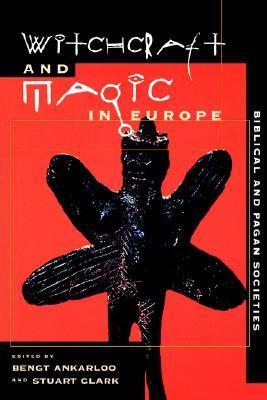
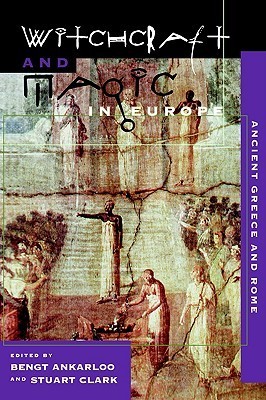
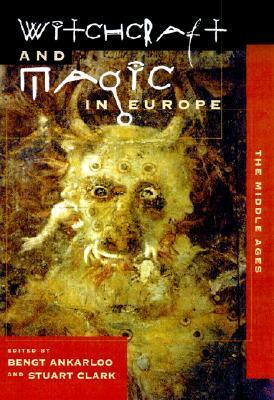
Books in series

#1
Witchcraft and Magic in Europe, Volume 1
Biblical and Pagan Societies
2001
In the ancient Near East, the art of influencing the natural course of events by means of spells and other ritual forms was universal. The social and political role of magic is apparent, too, in the competition to achieve precedence over rival systems of ritual practice and belief. Within a region filled with petty kingdoms competing for power, the Jews of ancient Palestine maintained control over adherents by developing distinct ritual practices and condemning as heretical those of nearby cults. Texts from Mesopotamia reveal a striking number of incantations, rituals, and medical recipes against witchcraft, attesting to a profound fear of being bewitched. Magical rituals were also used to maintain harmony between the human and divine realms.The roots of European witchcraft and magic lie in Hebrew and other ancient Near Eastern cultures and in the Celtic, Nordic, and Germanic traditions of the continent. For two millennia, European folklore and ritual have been imbued with the belief in the supernatural, yielding a rich trove of histories and images.Witchcraft and Magic in Europe combines the traditional approaches of political, legal, and social historians with a critical synthesis of cultural anthropology, historical psychology, and gender studies. The series, complete in six volumes, provides a modern, scholarly survey of the supernatural beliefs of Europeans from ancient times to the present day. Each volume of this ambitious six-volume series contains the work of distinguished scholars chosen for their expertise in a particular era or region.

#2
Witchcraft and Magic in Europe, Vol. 2
1999
Each volume of this ambitious six-volume series contains the work of distinguished scholars chosen for their expertise in a particular era or region. Volume one explores witchcraft and magic from the heroic age of Homer's Greek East to the time of the rise of Christianity.

#3
Witchcraft and Magic in Europe, Volume 3
The Middle Ages
2001
During the Middle Ages a shared European concept of magic emerged. In the early period, pagan beliefs and practices were absorbed into everyday culture, including the rituals of the Church. The rise of the practice of "white magic" in the twelfth century became so popular that it caused a widespread determination in the Church to condemn any unsanctioned beliefs or practices. The Church and state, both centralized powers in a decentralized Europe, gradually sharpened their attitude toward magic in general, and sorcery and witchcraft in particular, paving the way for the violent outbreaks of witch persecutions in early modern Europe.
Witchcraft and Magic in Europe combines the traditional approaches of political, legal, and social historians with a critical synthesis of cultural anthropology, historical psychology, and gender studies. The series, complete in six volumes, provides a modern, scholarly survey of the supernatural beliefs of Europeans from ancient times to the present day. Each volume of this ambitious six-volume series contains the work of distinguished scholars chosen for their expertise in a particular era or region.
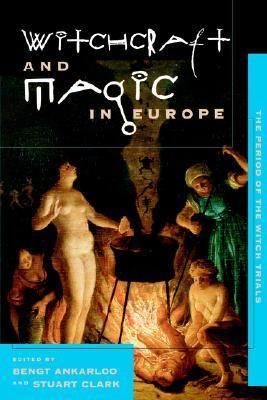
#4
Witchcraft and Magic in Europe
The Period of the Witch Trials
2001
Each volume in the series Witchcraft and Magic in Europe combines the traditional approaches of political, legal, and social historians with a critical synthesis of cultural anthropology, historical psychology, and gender studies. The series, complete in six volumes, provides a modern, scholarly survey of the supernatural beliefs of Europeans from ancient times to the present day.
Most European prosecutions for the crime of witchcraft occurred between the fifteenth and seventeenth centuries, with the peak coming in the hundred years after 1560. This volume brings together the large amount of recent scholarship on witchcraft of this period and provides a novel analysis of the trials by considering the legal systems involved. Witch hunts, methods of torture, and the scientific interest in magic spells and demonology as an intellectual pursuit are also covered in detail.
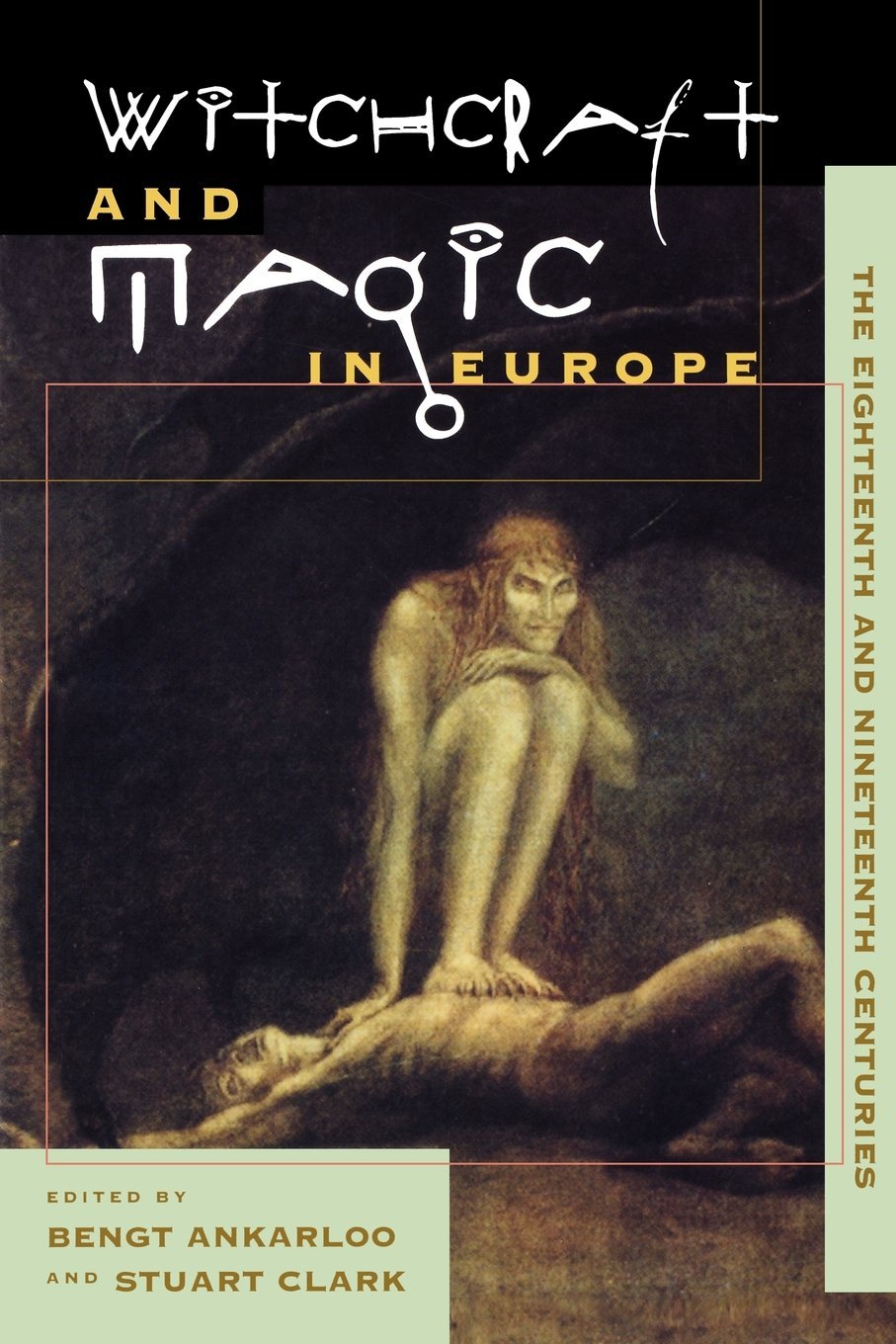
#5
Witchcraft and Magic in Europe, Volume 5
The Eighteenth and Nineteenth Centuries
1998
The roots of European witchcraft and magic lie in Hebrew and other ancient Near Eastern cultures and in the Celtic, Nordic, and Germanic traditions of the Continent. For two millennia, European folklore and ritual have been imbued with the belief in the supernatural, yielding a rich trove of histories and images.A series that combines traditional approaches of political, legal, and social historians with critical syntheses of cultural anthropology, historical psychology, and gender studies, Witchcraft and Magic in Europe provides a modern, scholarly survey of the supernatural beliefs of Europeans from ancient times to the present day. Each of the six volumes in the series contains the work of distinguished scholars chosen for their expertise in a particular era or region. The eighteenth century saw the end of witch trials everywhere. The authors chart the process of and reasons for the decriminalization of witchcraft, but also challenge the widespread assumption that Europe then became "disenchanted." Here for the first time are surveys of the social role of witchcraft in European communities, as well as a full treatment of Victorian supernaturalism and of the continued importance of witchcraft and magic as topics of debate among intellectuals and other writers.Other volumes in the series Witchcraft and Magic in Europe: The Period of the Witch Trials
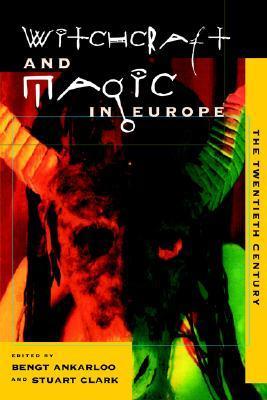
#6
Witchcraft and Magic in Europe, Volume 6
The Twentieth Century
1998
The roots of European witchcraft and magic lie in Hebrew and other ancient Near Eastern cultures and in the Celtic, Nordic, and Germanic traditions of the Continent. For two millennia, European folklore and ritual have been imbued with the belief in the supernatural, yielding a rich trove of histories and images.
A series that combines traditional approaches of political, legal, and social historians with critical syntheses of cultural anthropology, historical psychology, and gender studies, Witchcraft and Magic in Europe provides a modern, scholarly survey of the supernatural beliefs of Europeans from ancient times to the present day. Each of the six volumes in the series contains the work of distinguished scholars chosen for their expertise in a particular era or region.
Witchcraft today continues to play a role in European societies and imaginations. This concluding volume includes a major new history of the origins and development of English "Wicca" and an account of the circumstances in which the term 'Satanist' has been used to label individuals or groups. The widespread prevalence of such phenomena proves the contemporary reality of beliefs in witchcraft and its threats.
Other volumes in the series Witchcraft and Magic in Europe:
Ancient Greece and Rome
The Eighteenth and Nineteenth Centuries
Biblical and Pagan Societies
The Middle Ages
The Period of the Witch Trials